Effectively using the local conversion tracking data tool is essential if you want to get the most out of your AdWords campaign and the best part is that it allows you to track websites, apps, phone calls, and more.
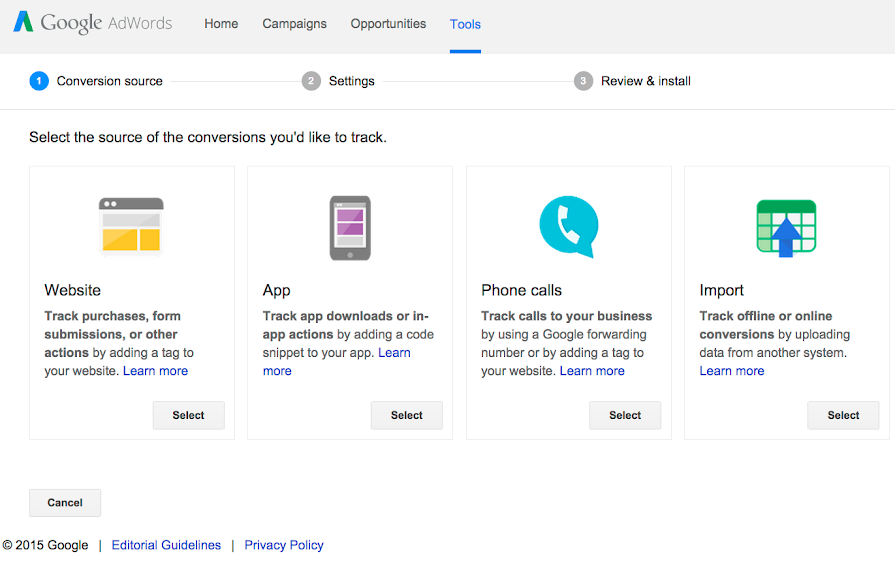
It’s good to install this tracking code if you want to get maximum benefits from AdWords, but be sure to install your tracking code and test it out first.
It helps you to get viable data based on how yourPPC campaigns are performing. However, to pull a comprehensive data set then the campaign has to run for at least 2 weeks to 2 months.
In that amount of time, the traffic coming to your campaign/business will give you plenty of data to analyze and having that kind of information is the best way to avoid failures when running Google Ads campaign.
Therefore, this could be the best time to plan and develop strategies to optimize your local campaignsas well as increase your overall local conversion rates.
To achieve the most from your local cost per conversion, here are some tactics to adopt:
1. Review your Search Terms Report
To do this, get into your campaign keywords and click on the details, then download your search terms report. You will get the real search queries from your report on the keywords that people typed into the search bar before clicking on the ads.
These search terms will give you the best information that lead to conversions. If these terms are valuable and have significant monthly search volumes (e.g., at least 1,000 searches), then you should consider using them as part of your keyword listings.
This could be a #winning situation as you can just pull inthe keywords that have shown previoussuccess in terms of generating conversions.
In addition, it’s good thing to add other keywords that have shown a certain level of success so that with the collective efforts of these search terms you could increase your conversion rate.
This will also help you to lower general PPC campaign costs per each conversion in your ability to control the bids.
2. Include Keywords Match Conversion Types
Get used to looking at your search terms, take time and analyze what kind of keywords have just led to conversions.
This will help you understand the pattern that your target audience is using to find your type of business in the search results, as well as give you insight into their choices of keywords.
According to Google, the better the Quality Score, the lesser you have to pay per click. This in turn can help you lower your PPC costs per conversions. Just be sure to always target your ads with the keywords that are already performing well.
For example, assume you are a house removal agency in Australia and you are choose the following keywords for your campaign:
house movers
removal companies
These are the main target keywords that could be costing you a lot of money because you are limiting the audience and not looking at how they would find your business from the prospect’s perspective. You should be utilizing other variations of the main keywords such as international removal company or interstate removal company, where the user is more likely to find your business and the information they need.
Remember that the customers you attract using the right keywords that are relevant to your product/service will always be better qualified and more likely to convert than customers who came across you from some random keywords less related to your business.
More importantly, getting the right clicks from the right customers will greatly decrease your cost per click and boost conversions.
3. Make Use of Long-Tail Keywords
Using long-tail keywords can greatly help increase your Google Ads conversions. Even though long-tail variations of the main keywords may have only a few searches per month, they’re very specific and lead to better quality leads.
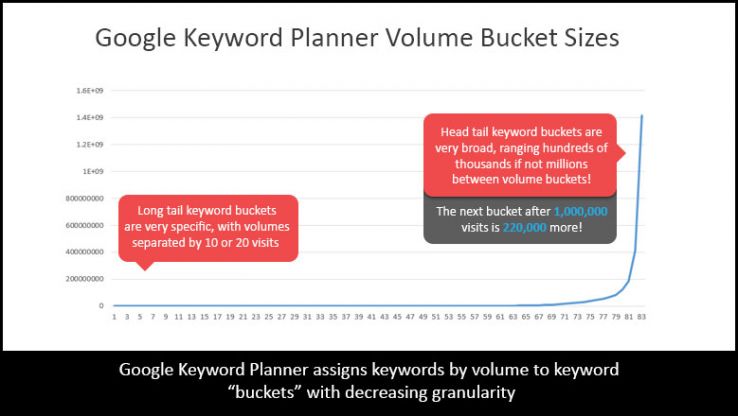
When optimizing your Google Ads with long-tail keywords, it is good to use the “IF” functions such that when a condition is met, it’ll determine whether or not the ad shows.
Here’s how Google explains it:
“IF functions allow you to insert a specific message in your text ad when a condition is met, and a default text when it does not. This makes your ads tailored to each search and more relevant to potential customers. Unlike ad customizers, IF functions do not use a feed.
How it works:
IF functions only work for ads shown on the Search Network. IF functions are parameters that go within braces {like this}. The parameter gets replaced by the text you specify when your ad is triggered by a person’s search. You can include IF functions anywhere in your text ad except for the final URL field.”
Here’s an example:

Long-tail keywords are really powerful because you are targeting commercial keywords that have little or no competition at all, thus getting qualified clicks from the Search Networks and growing your sales.
For example, for pest control companies, long-tail keywords might be:
Best pest control companies
how to find reputable pest control companies
Discount pest control companies
Pest control companies in Australia
Interstate pest control companies near you
Long distance pest control companies near me
Bear in mind, though, that a single main keyword can have several long-tail keywords attached so that you could easily get better qualified conversions from such keywords.
4. Consider Creating a “Near Me “Campaign
This might seem irrelevant for getting more local conversions and enhancing the campaign performance, but “near me” searches usually come from customers who are interested in visiting a local store (e.g., a restaurant or clinic).
In this example, a prospect entered “Builder dealership near me” in the search. Here are the results they received:
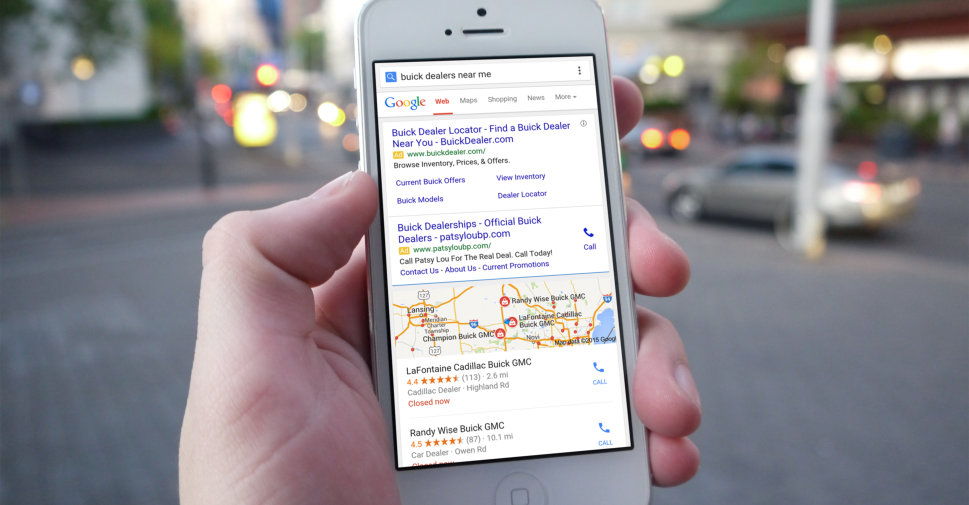
In today’s world, so many people are localizing like never before. Therefore, you need to position your Google PPC ads to reach this group of people so that they can easily find you.
More than 50% of web traffic is on the mobile and most of the time Google already knows the locations of the users.
To capitalize on this feature, consider creating a separate campaign to target ’Near me” search users.
For instance, assume you are in Australia. Go to the Campaigns setting tab and set your location. Click on “Add Location”, select the “Near Me” Campaign, search for Australia, and add it.
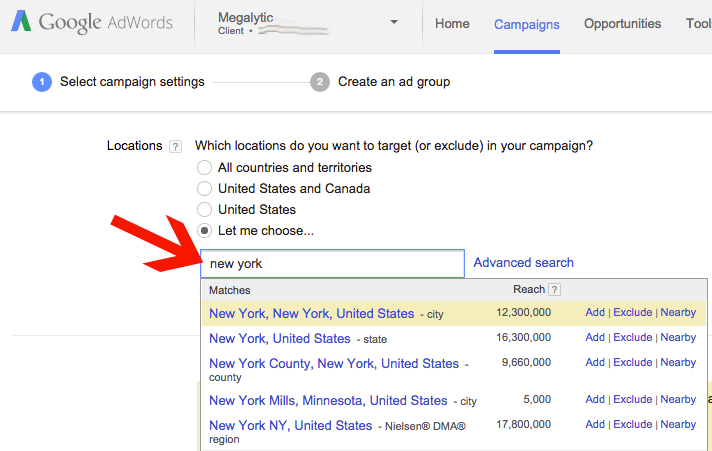
By doing this, you are now targeting many people living in Australia who you want to see your ads. You can even add more relevant long-tail keywords if you want. Still using pest control as our niche, here are some other keywords with the “near me” or “near you” modifier added:
pest control near you
pest control near me
local pest control companies near me
pest control companies near you
Getting your business listed in Google My Business is another effective way to reach more local prospects and customers with digital marketing, especially those that live or hang out near your business location.
To grab these people, list your “My business” location with your AdWords account. This will target operators near your business location and is effective especiallywhen you have several locations.
4. Enable Mobile Click-to-Call Feature
This is the most efficient and probably the least used feature that AdWords offers. However, it’s quite effective and easy to set up.
Call conversions are mostly comprised of three types: Call extension, Call from the website, and Phone click on mobile site.
i). Call extension: This feature makes it possible for advertisers to target mobile users easier. By enabling it, visitors just see the “call” button next to your ads on a mobile device and can instantly (and directly) click to call you.
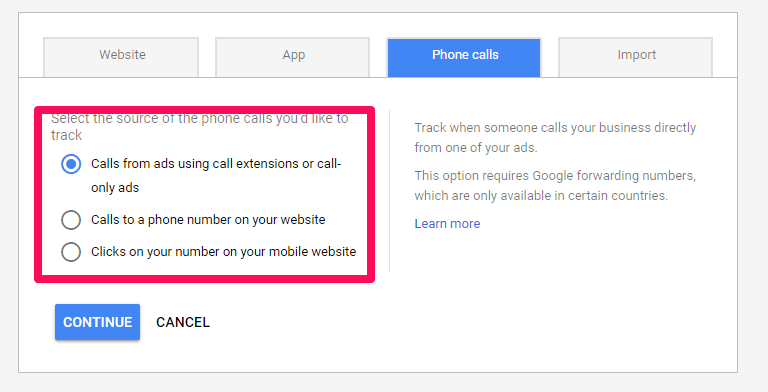
ii). Calls from website: In this kind of conversion, Google shows a nice big call button when somebody visits your website after they click your promotion.
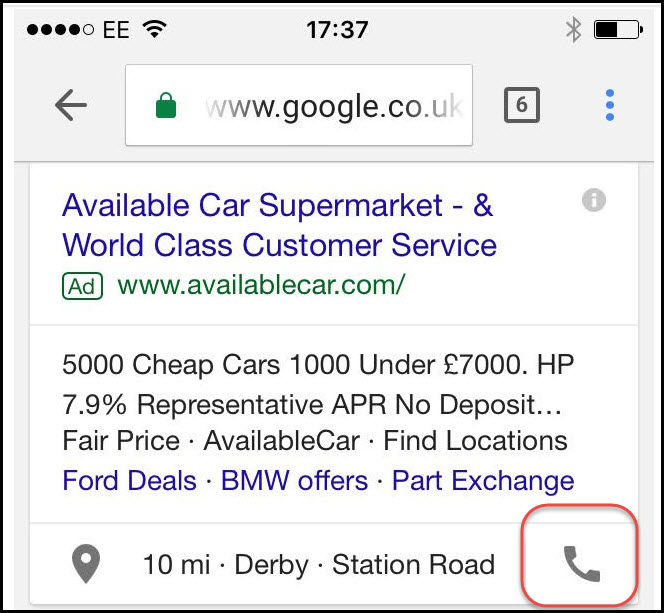
Your own phone number supplements this Google sending number so that you can see how many people called you after they arrived on your website through your Google Ads campaign. This is a great feature to take advantage of for tracking conversions.
iii). Phone clicks through a mobile site: This is maybe the most critical call following source as it turns the dead phone number on your portable site into a live interactive form of engagement.
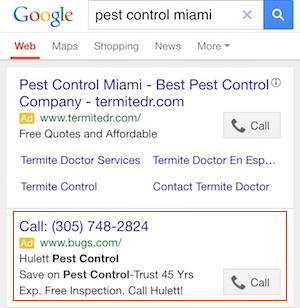
Many visitors consider calling you manually after landing on your business page and clicking on the ad. But when they dial your number automatically, then they get an option to click and call which will, in turn, increase your local conversion rates as it is tracked directly through the ad.
5. Use a Winning Landing Page
Creating and using a winning landing page on your Google Ads campaign is critical because it helps you track your campaign’s success right from the start. Plus, it is good to frequently test your landing pages and continue to optimize them.
Although it can be boring and time consuming, eventually you will reach the point of achieving your ad goals based on your landing pages.
Just make sure that you have a consistent message across all fronts- especially between your ad copy and landing page. In other words, they must look alike in everything so that users who click the ad will not get confused when they land on an entirely different page that may veer them off track. Here’s a good example of consistent, clear messaging:
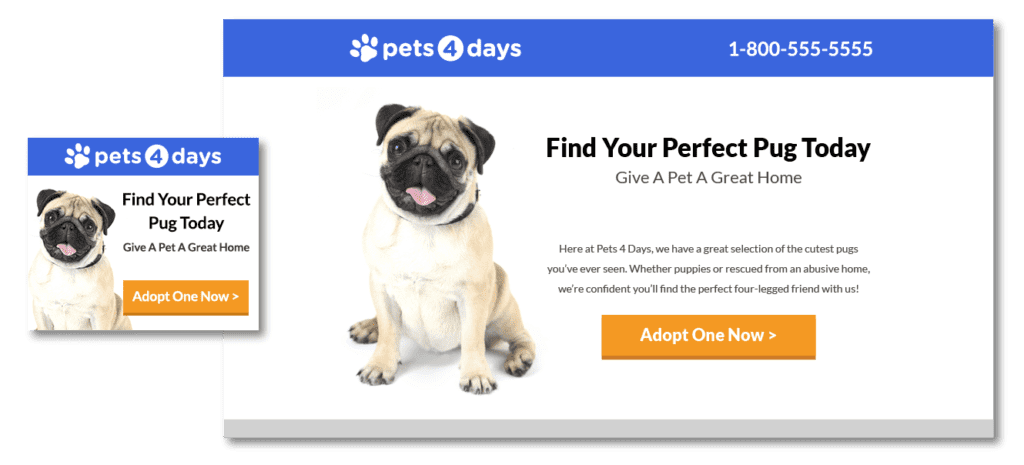
If you are in the pet adopting business, then you can easily guess what your competitor is doing. But an easier way is to use a PPC spying tool.
For instance, SpyFu tool can help you figure out and assess the history of your competitor’s ads during a period of time of which they have been utilizing their landing page.
To do this, enter your competitor’s domain URL (e.g., Zappos) to analyze their website. It also allows you to check their ad copy and other performance metrics.
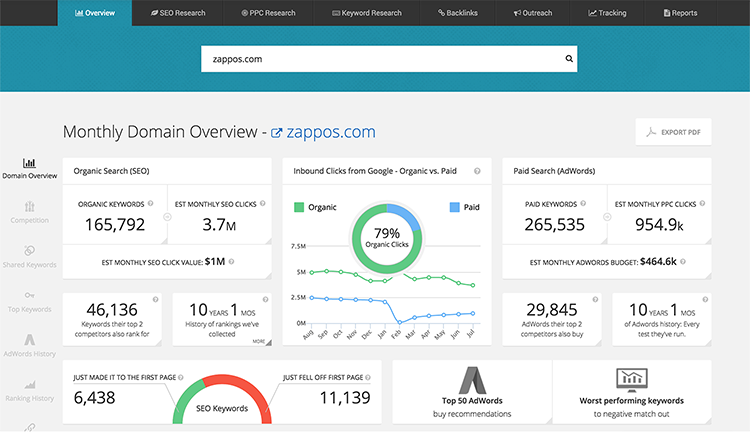
6. Bid on Your Competitors’ Keywords
We consider this approach the best to win and get more local conversions because it is an affordable and effective way of reaching your goals.
Most local advertisers are experienced with this approach. Can you guess what they’re doing?
If your first thought was to guess that they’re bidding on competitors’ brand names then you are right.
An even smarter move is to find competitors offline that are popular and trusted by consumers and bid on their branded terms to drive even more customers to your business (just make sure you’re not violating any usage policy).
For example, if the company doesn’t allow third-party organizations or marketers to bid on their brand names then don’t do it.
Many businesses have offline competitors that are spending their ad dollars heavily on TV, radio, print advertising, and other traditional methods. But funny enough, they may not even have a functional website. This opens the door to take advantage of such an opportunity.
7. Use Enhanced Bidding and Conversion Optimizer
To meet all requirements for this conversion streamlining method, you’re required to have had somewhere around 15 conversions in the last 30 days, keeping in mind that the end goal is to enable AdWords to have enough recorded conversion information to work with.
With this bidding alternative, you are essentially setting up a cost per acquisition (CPA).
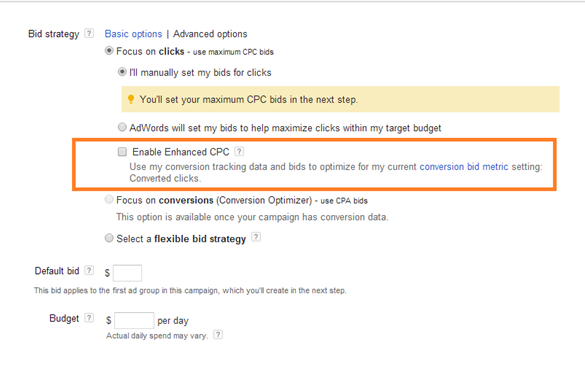
Obviously, before you set up CPA bidding, you need to ensure your expense per conversion is as at a worthy level. If your present conversion cost is too high, then this method won’t work for you.
And when setting up these robotized bidding alternatives, make sure you’re keeping a close watch on your campaigns to ensure that the conversion rate and the expense are staying balanced.
Conclusion
In this day and age, most local businesses are struggling to communicate their brand message to their target audience because of limited resources that are required in traditional advertising.
However, if you leverage the internet then you can unleash potential in several proven channels to push your products and services to customers at a cheaper cost.
We love Google Ads because it brings online users who are looking for the information that you have on your website directly to you and not the other way around.

